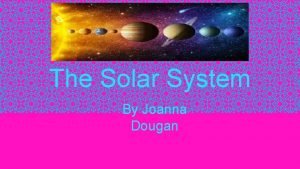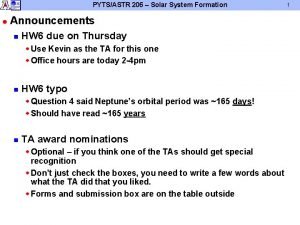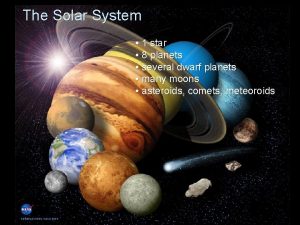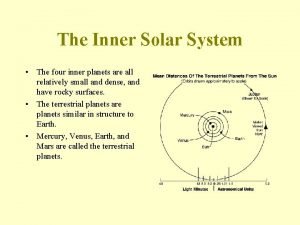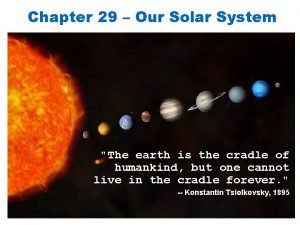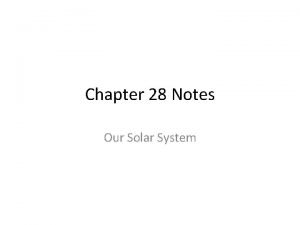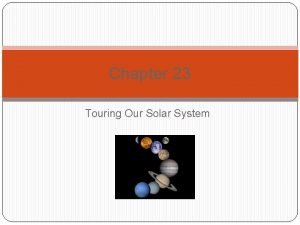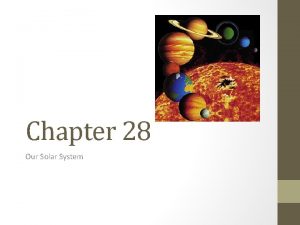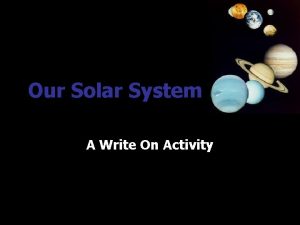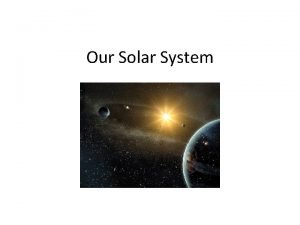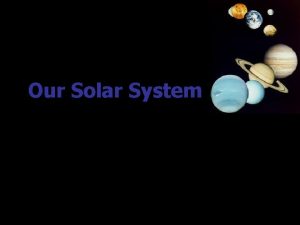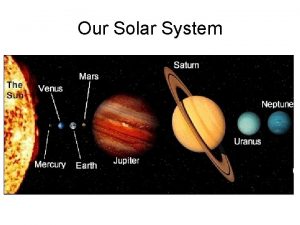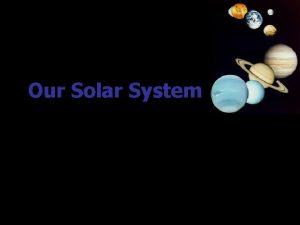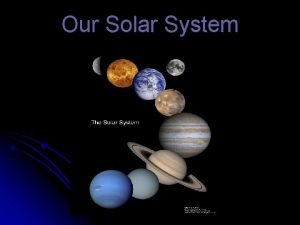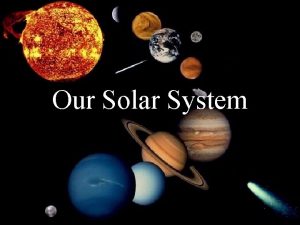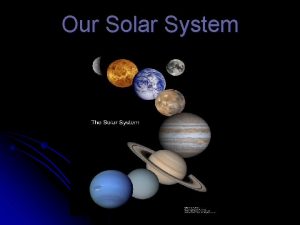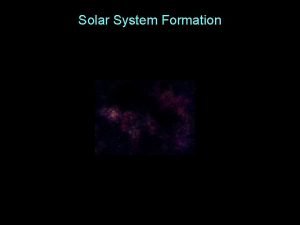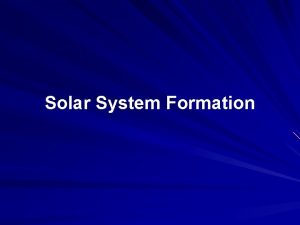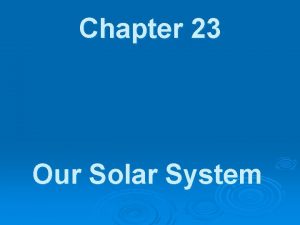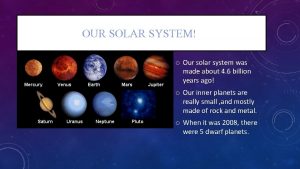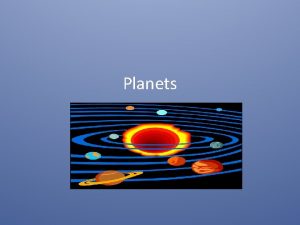Formation of Our Solar System Our solar system


















- Slides: 18

Formation of Our Solar System

• Our solar system formed about 4. 6 billion years ago (4600 million years) from a giant cloud of gas and debris. The planets were formed by condensing matter due to gravity.

• More dense materials were held near the sun by gravity, while less dense materials were pushed away by high temperatures, pressure and solar wind from the sun. Terrestrial (Rock) Jovian (Gas) Dense Low Density

Terrestrial Planets: • 4 closest planets to the Sun • Low mass (small) • High density (mostly rock)

Jovian Planets: • 4 farthest planets from the Sun • High mass (large) • Low density (mostly gas)

Pluto is an exception: • Very small • mostly ice & rock • Eccentric and inclined orbit

• Gravity caused the Earth and the other planets to become layered due to density differences in their materials. (more dense materials sank to the interior of the planet, less dense materials rose to the surface)

Know general characteristics of planets! ESRT pg. 15


Asteroids, Comets & Meteoroids

Asteroids • Particle that orbits the sun – smaller than planets • Formed from debris left over from the formation of our solar system or broken apart comets • Many found in an asteroid belt between Mars and Jupiter

Asteroids • Some have eccentric (flat, not circular) orbits around the sun and cross Earth’s orbital path. Could collide with Earth.

Comets • Dust and ice that has a very elongated (eccentric, flat) orbit around the sun. • When comets come close to the sun, heat vaporizes some of the comet’s ices, producing a long flowing tail. The tail always points away from the sun.


Meteoroids • Meteoroid: fragment of rock or ice traveling in space. Smaller than asteroids.

Meteor • Meteor: streak of light caused by meteoroid entering Earth’s atmosphere. Friction causes air around the meteoroid to glow. Often called “shooting stars. ”

• When Earth passes through remnants of a comet, can have a meteor shower, with many meteors in one night.

Meteorite • Meteorite: large meteoroid that doesn’t burn up in our atmosphere and reaches Earth’s surface.
 Nebular theory comic strip
Nebular theory comic strip Formation of the solar system
Formation of the solar system The formation of the solar system
The formation of the solar system The formation of the solar system
The formation of the solar system Formation initiale vs formation continue
Formation initiale vs formation continue The four inner planets
The four inner planets Chapter 29 our solar system
Chapter 29 our solar system Chapter 28 our solar system
Chapter 28 our solar system Chapter 23 touring our solar system
Chapter 23 touring our solar system Chapter 28 our solar system
Chapter 28 our solar system How many days are in saturn's year
How many days are in saturn's year Biggest planet in our solar system
Biggest planet in our solar system Our solar system
Our solar system Wholsale solar
Wholsale solar Solar energy is free. solar is inexhaustible
Solar energy is free. solar is inexhaustible Thinking language and intelligence
Thinking language and intelligence Our census our future
Our census our future Christ be our light
Christ be our light Marcus aurelius our life is what our thoughts make it
Marcus aurelius our life is what our thoughts make it
